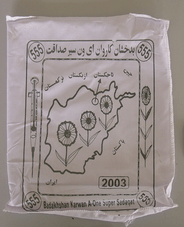Central Asia Research Paper No. 1, August 2012
By Alisher Latypov
According to a book published in the 1960s, “H is for heaven; H is for hell; H is for heroin.” But in the ever-growing literature on opiates in Central Asia, the manifold meanings of “H” have been intertwined with the absence of any serious attempt to study the history of narcotic drugs in the region. As most of the literature was produced in the past two decades, recent discussions of drugs in Central Asia are deeply en-trenched within the discourse of ‘narco-jihad’, ‘Islamic extremism and fundamentalism’, ‘insurgency’, ‘terror-ism’, ‘security’ and ‘stability.’ Lacking in these accounts is sensitivity to the Soviet historical roots of many questions that besiege various groups concerned with the subject of drugs in Central Asia today, and the importance of viewing this topic in its full historiographical contexts. Throughout this paper, I aim to highlight the significance of a further “H” – that which stands for a ‘historical perspective’ – and provide a detailed overview of the history of historical writings on drugs in Central Asia. To expose numerous myths, as well as the key phases of formation and reinterpretation of Soviet drug knowledge, I draw upon an extensive analysis of a broad spectrum of sources and demonstrate what archival documentation and other materials may or may not reveal. I suggest that without serious attempts to engage and re-engage with the ‘new’ old Soviet sources, we will be bound to repeat the abundant inaccuracies which exist in secondary literature and effectively to reinforce the misrepresentation of drugs in Central Asia as irrelevant until ‘yesterday.’ In conclusion, I discuss the implications that this paper has with regard to our approaches to the drug ‘problem’ in Central Asia and reflect on some of the questions that need to be addressed in future studies.
